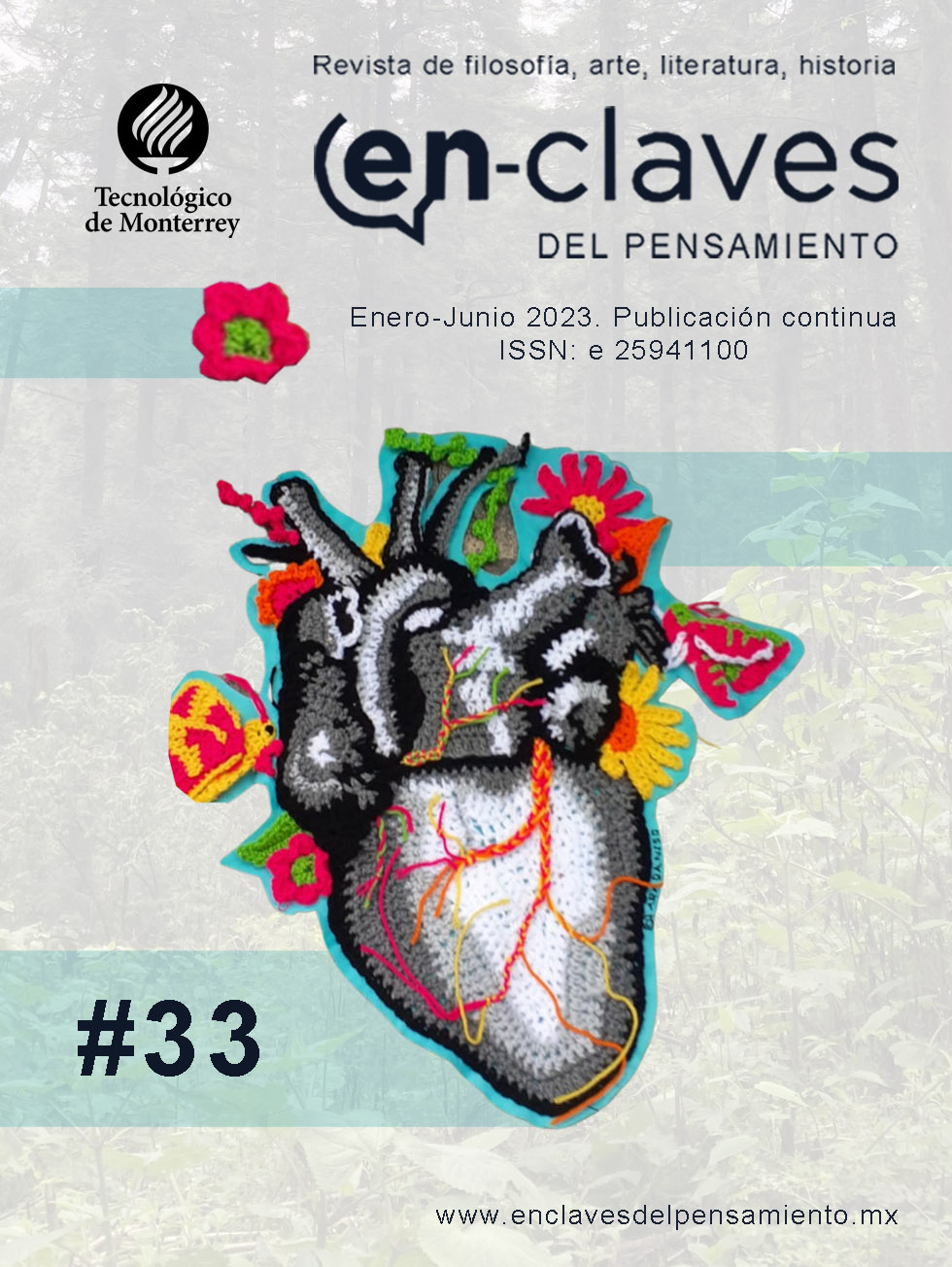Representations of Violence in Mexican Cinema Awarded at International Festivals 2000-2020
Main Article Content
The main objective of this research is to identify and analyze the themes of Mexican cinema awarded at nodal international festivals between 2000 and 2020. The study uses a mixed methodology that combines a longitudinal search for the creation of a historical database on award-winning Mexican films at international festivals. For two decades. The quantitative methodology is used to know the number of internationally awarded Mexican films, as well as their evolution over time and their themes during the decades from 2000 to 2020, through the construction of a database based on reports and databases, specialized data. The theoretical-methodological analysis of cinematographic discourses is carried out based on the concepts of violence developed by Galtung, Foucault, Arendt, Butler, Magnani, Han, as well as from Williams’s concept of structure of feeling. The study reveals that 81% of the awards received by Mexican cinematography at international festivals deal with a type of structural, direct or cultural violence, expressed through state violence, poverty and inequality, gender violence, domestic violence and the war on drugs. The Mexican cinema that has participated during the last two decades in nodal international festivals, has experienced a progressive tendency to deal with issues related to violence in Mexico and it is foreseeable that this trend will continue.
Agencia Reforma. “Fusilan a 17 personas en Michoacán. No encuentran los cuerpos”. Al día Dallas. 2022. https://bit.ly/3vcMRbA
Angel, Arturo. “En 2020, la violencia en México se mantuvo en niveles récord; en 11 estados aumentaron asesinatos”, Animal Político, 2020. https://bit.ly/3047YxG
Arendt, Hannah. Eichmann en Jerusalén. Lumen, 2013.
Artículo 19. Periodistas asesinadas/os en México, en relación con su labor informativa, 2022. https://articulo19.org/periodistasasesinados/
Butler, Judith. El género en disputa: el feminismo y la subversión de la identidad. Paidós, 2007.
Cáceres Riquelme, Jorge, and Hugo Herrera Pardo. "Las formas fijas y sus márgenes: sobre" Estructuras de sentimiento" de Raymond Williams. Una trayectoria." Universum (Talca) 29.1 (2014): 173-191. DOI: https://doi.org/10.4067/S0718-23762014000100010
Codina, Lluís. "Revisiones bibliográficas sistematizadas: procedimientos generales y Framework para ciencias humanas y sociales." (2018). https://doi.org/10.31009/methodos.2020.i01.05 DOI: https://doi.org/10.31009/methodos.2020.i01.05
Concha, Percy Calderón. "Teoría de conflictos de Johan Galtung." Revista de paz y conflictos 2 (2009): 60-81.
De Valck, Marijke. Film festivals: From European geopolitics to global cinephilia. Amsterdam University Press, 2007. DOI: https://doi.org/10.1017/9789048506729
Pablo Del Rio, Álvarez, Amelia, Miguel Del Rio. Pigmalión. Informe sobre el impacto de la televisión en la infancia. Fundación infancia y aprendizaje, 2004.
Foucault, Michel. "„Il faut défendre la société”. Cours au Collège de France, 1976." Tijdschrift Voor Filosofie 59.3 (1997).
Foucault, Michel. Vigilar y castigar: nacimiento de la prisión. Siglo xxi, 2000.
Galtung, Johan. "Violence, peace, and peace research." Journal of peace research 6.3 (1969): 167-191. DOI: https://doi.org/10.1177/002234336900600301
Galtung, Johan. Tras la violencia, 3R: reconstrucción, reconciliación, resolución. Bakeas, 1998.
Galtung, Johan. Violencia Cultural. Gernika Gogoratuz, 2003.
González, M. (Abril, 26, 2022). Opinión. El caso de Debhani Escobar es la punta del iceberg de lo que ocurre en Nuevo León: la alerta por el aumento de mujeres desaparecidas en el estad del norte de México. BBC News. https://www.bbc.com/mundo/noticias-america-latina-61223703
Iborra, Isabel, and José Sanmartín. "¿ Cómo clasificar la violencia?: la taxonomía según Sanmartín." Criminología y justicia 1 (2011): 22-31.
INEGI. Instituto Nacional de Estadística y Geografía (México).
Panorama nacional sobre la situación de la violencia contra las mujeres / Instituto
Nacional de Estadística y Geografía, 2020.
Magnani, Lorenzo. Understanding violence: The intertwining of morality, religion and violence: a philosophical stance. Vol. 1. Springer Science & Business Media, 2011. DOI: https://doi.org/10.1007/978-3-642-21972-6_1
Menéndez, Eduardo L. "Violencias en México: las explicaciones y las ausencias." Alteridades 22.43 (2012): 177-192.
Mejías, Ainhoa Montserrat Vásquez. "Recepción de series sobre narcotráfico en México." Catedral Tomada: Revista de Crítica Literaria latinoamericana 8.15 (2020): 280-304. DOI: https://doi.org/10.5195/ct/2020.449
Mohar, Gustavo. La inseguridad y la violencia en México. Algunas premisas, preguntas y escenarios de corto plazo. Conacyt – Colegio de México, 2018.
OECD. Building an Inclusive Mexico. Policies and Good Governance for Gender Equality. París, 2017. https://doi.org/10.1787/9789264265493-en DOI: https://doi.org/10.1787/9789264265493-en
ONU - Comité Contra la Desaparición Forzada. Informe del Comité contra la Desaparición Forzada sobre su visita a México al amparo del artículo 33 de la Convención, 2022. https://bit.ly/3Mh6QfV
ONU – Mujeres. La violencia feminicida en México. Aproximaciones y tendencias. México: ONU Mujeres, 2020.
Pardo, J. y Arredondo, I. “Opinión: Una guerra inventada y 350,000 muertos en México”. The Washington Post, Junio 14, 2021. https://wapo.st/3uxxEmi
Pérez-Anzaldo, Guadalupe. El espectáculo de la violencia en el cine mexicano del siglo XXI. Consejo Editorial H. Cámara de Diputados, 2018.
Piasecki, Jan, Marcin Waligora, and Vilius Dranseika. "Google search as an additional source in systematic reviews." Science and engineering ethics 24.2 (2018): 809-810. https://doi.org/10.1007/s11948-017-0010-4 DOI: https://doi.org/10.1007/s11948-017-0010-4
Ramos, María Marcos. "Aproximaciones teóricas al concepto de violencia y violencia audiovisual." Studia Iberica et Americana: journal of Iberian and Latin American literary and cultural studies 6 (2019): 19-29.
Mazzei, Julie. Death squads or self-defense forces?: how paramilitary groups emerge and challenge democracy in Latin America. Univ of North Carolina Press, 2009. DOI: https://doi.org/10.5149/9780807898611_mazzei
Naciones Unidas. México: funcionarios públicos y crimen organizado son los responsables de las desapariciones. Noticias ONU, 2022. https://news.un.org/es/story/2022/04/1507152
Ovalle, Lilian Paola. "Imágenes abyectas e invisibilidad de las víctimas. Narrativas visuales de la violencia en México." El cotidiano 164 (2010): 103-115.
https://www.redalyc.org/articulo.oa?id=32515894013
Rodríguez Jiménez, A., y Pérez Jacinto, A. O. Métodos científicos de indagación y de construcción del conocimiento. Revista Escuela De Administración De Negocios, (82), 175–195, 2017.
https://doi.org/10.21158/01208160.n82.2017.1647 DOI: https://doi.org/10.21158/01208160.n82.2017.1647
Stewart, Pamela, and Andrew Strathern. Violence: Theory and ethnography. A&C Black, 2002.
Weil, Simone. The Iliad or The Poem of Force. Translated by Mary McCarthy. Politics, Volume 2, Nº 11; November, 1945. En: https://libcom.org/files/politics%20(November%201945).pdf
Williams, Raymond. Marxismo y Literatura. Las Cuarenta, 2009.
Williams, Raymond. Drama from Ibsen to Brecht. The Hogarth Press, 1987.
Zavaleta Betancourt, José Alfredo. "El campo de los estudios de la violencia en México." Anuario Latinoamericano–Ciencias Políticas y Relaciones Internacionales 4 (2017). DOI: https://doi.org/10.17951/al.2017.4.41
Zavaleta Betancourt, José Alfredo. La violencia regional en México. CLACSO, 2020. DOI: https://doi.org/10.2307/j.ctv1gm029z
Article Details

This work is licensed under a Creative Commons Attribution-NonCommercial 4.0 International License.













